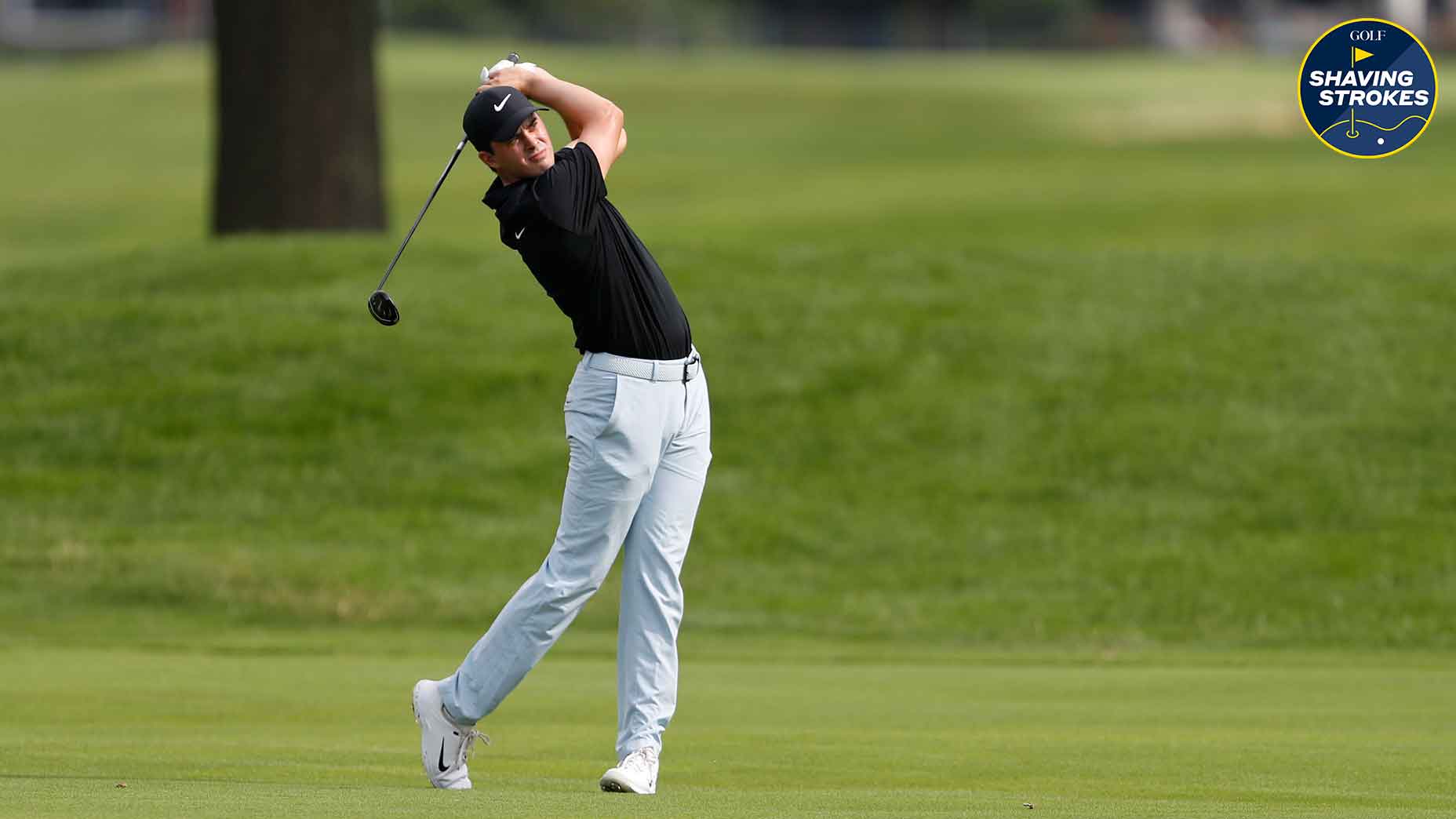This 1 stat can predict your average score, says top teacher
Which golf stat is the most important? GOLF Top 100 Teacher Ed Oldham explains (and it can help you predict your average score)
Which golf stat is the most important? GOLF Top 100 Teacher Ed Oldham explains — and it can help you predict your average score.
Getty Images

Welcome to Shaving Strokes, a GOLF.com series in which we’re sharing improvements, learnings and takeaways from amateur golfers just like you — including some of the speed bumps and challenges they faced along the way.
While I’m still just a mid-handicapper, one thing that’s really helped my game improve is better understanding the importance of golf stats. Just like your numbers on a launch monitor, when you know what areas of the game helped or hurt you during a round (or over a number of rounds), you can go grind on them on the driving range.
For me, it’s always been about two key stats: Fairways hit and putts per round.
If I can consistently avoid trouble with my drives, I feel good about my round. It’s even better if I can avoid three-putts.
But when you dive deeper into how stats can better help your game, there are a few that really stand out as differentiators — and GOLF Top 100 Teacher Ed Oldham shares the one golf stat he thinks is most important, which can go a long way in predicting your overall score. See what Oldham says below.
Which golf stat can help determine your average score?
“We’ve all heard the saying ‘Drive for show and putt for dough,’” Oldham says. “But, as it turns out, neither driving nor putting has the most influence on your score. So what golf stat actually does?”
Here we turn to a formula called “Riccio’s Rule” (named after Lucius Riccio, Ph.D.), which was first presented at the First World Scientific Congress of Golf in 1990 and identified greens in regulation (GIRs) as the most powerful predictor of score.
“According to [Riccio’s Rule], tee shots have the second-most influence on your score — so there’s no doubt that tee shots are important, but you could miss every fairway and still have a chance at a decent score,” Oldham says. “But if you miss every green? Well, it’d be quite the long day for you. There’s even a formula to help determine what your average score will likely be once you know your greens in regulation stat. Simply take your average greens in regulation number and multiply it by two, then subtract that number from 95. The result is what your average score would be.”
While Riccio’s Rule isn’t a perfect formula after just one round, when taking the average of four or more rounds, its accuracy is improved and its predictive accuracy is approximately equal to plus or minus one stroke about 90 percent of the time, per the publication referenced above.
So how can you hit more greens in regulation? Oldham shares his tips below.
How to hit more greens in regulation
“To hit more greens, you want to prioritize clubface, solid contact and making sure you pick smarter targets,” Oldham says.





